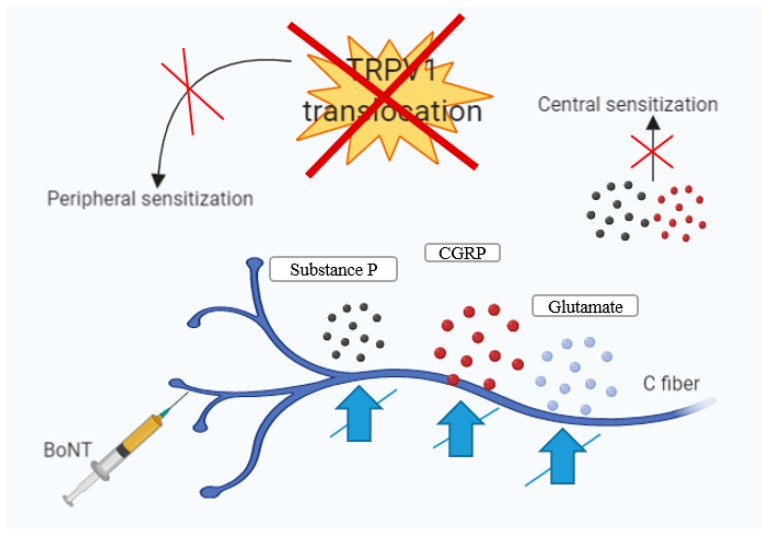Figure 2.
BoNT-A mechanism in migraine—botulinum toxin enters the nerve and inhibits the neurotransmitters, both pro-inflammatory and nociceptive, leading to an attenuation of inflammation, vasodilatation, and finally, of pain. Moreover, the modulation of this event contributes to the decrease in pain intensity. Furthermore, BoNT-A produces local desensitization, and the toxin decreases plasmatic concentrations of SP, glutamate, and CGRP, which are the triggers for pain, inflammation, and vasodilatation. BoNT-A interferes with the transport through the axons to neighboring areas, and the same effects was observed in adjacent neurons or glial cells [104,120,121].

